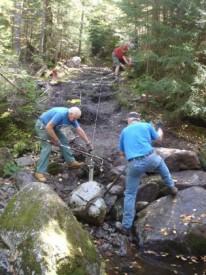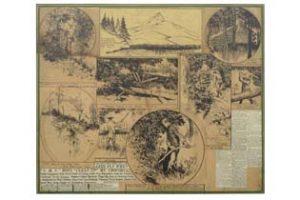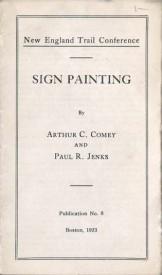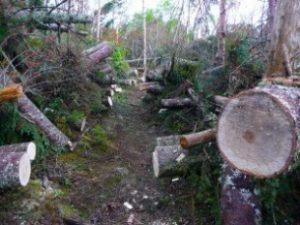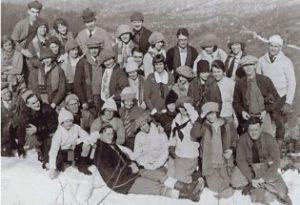March 31, 2015 – March 2, 2016
The Museum of the White Mountains, Main Gallery
Curated by Ben Amsden, rural sociologist, Director, Center for Rural Partnerships, Plymouth State University, Mike Dickerman, author, publisher, co-editor of the Appalachian Mountain Club Guide (2010 – present), Steve Smith, author, co-editor of the Appalachian Mountain Club Guide (2001 – present)

For 140 years trail clubs have been instrumental in the development of the White Mountains as a destination for visitors and residents seeking physical exertion, scenic beauty, spiritual refreshment, and hearty fellowship on mountain trails.
The clubs were formed for several purposes: to explore remote regions of the mountains, away from the usual tourist routes; to organize group “tramping” excursions for members, providing opportunities for hikers to socialize; and, perhaps most importantly, to work on trails, whether creating new trails, or maintaining existing trails. Over the decades the work of trail clubs has expanded to include conservation, education, and community involvement, while others have stuck to their original roots in trail work.
Though some peaked and then faded into oblivion, many of the clubs founded in the late 1800s and early 1900s are still active in the 21st century and can take pride in many lasting accomplishments.
The exhibition is organized around three key themes, each representing the contribution of trail clubs to the outdoor recreation landscape:
1. Sense of Place: Trail clubs help people connect not just to the activity of hiking but also to the club’s local region and the White Mountain region as a whole.
2. Sense of Purpose: Trail clubs leverage their resources and the resources of their members to create and maintain trails, educate visitors, and advocate for natural spaces.
3. Sense of Belonging: Trail clubs create opportunities for people to be part of a community and socialize with others.
Every year thousands of hikers set foot on the vast and varied trail network in the White Mountains. Whether trekking across the airy crest of Franconia Ridge, or wandering past waterfalls on the northern Presidentials, mountain enthusiasts reap the benefits of dedicated work by the trail clubs of the White Mountains. Each of these twenty or so clubs— many still active, others faded into oblivion—was, from its beginning, imbued with a sense of purpose. Two primary missions of the clubs have been to build and maintain trails, and to advocate for the protection and appropriate use of the mountain backcountry.
Since 1873, when the region’s first trail club—the White Mountain Club of Portland, Maine—organized fun and adventurous excursions deep into the heart of New England’s best-known mountain region, trail clubs have forged an unmistakable identity with not only their very localized sphere of influence, but also the White Mountains region as a whole. The resulting bond between the clubs’ individual members and the respective domains of each organization continues to this day, and in many instances has carried on from one generation to the next.
Trail Clubs mean many things to many people. To some, a trail club cultivates a sense of purpose, a calling to create and maintain trails, educate visitors, and advocate for natural spaces. To others, a trail club can be a key ingredient in their sense of place, representing past experiences, shared meanings, and personal histories. But to others still, the clubs that support and maintain the hiking trails of New Hampshire help develop a sense of belonging—the sense that one is a “member” who developed a sense of community based on special places, meaningful activities, and a shared experience.


























